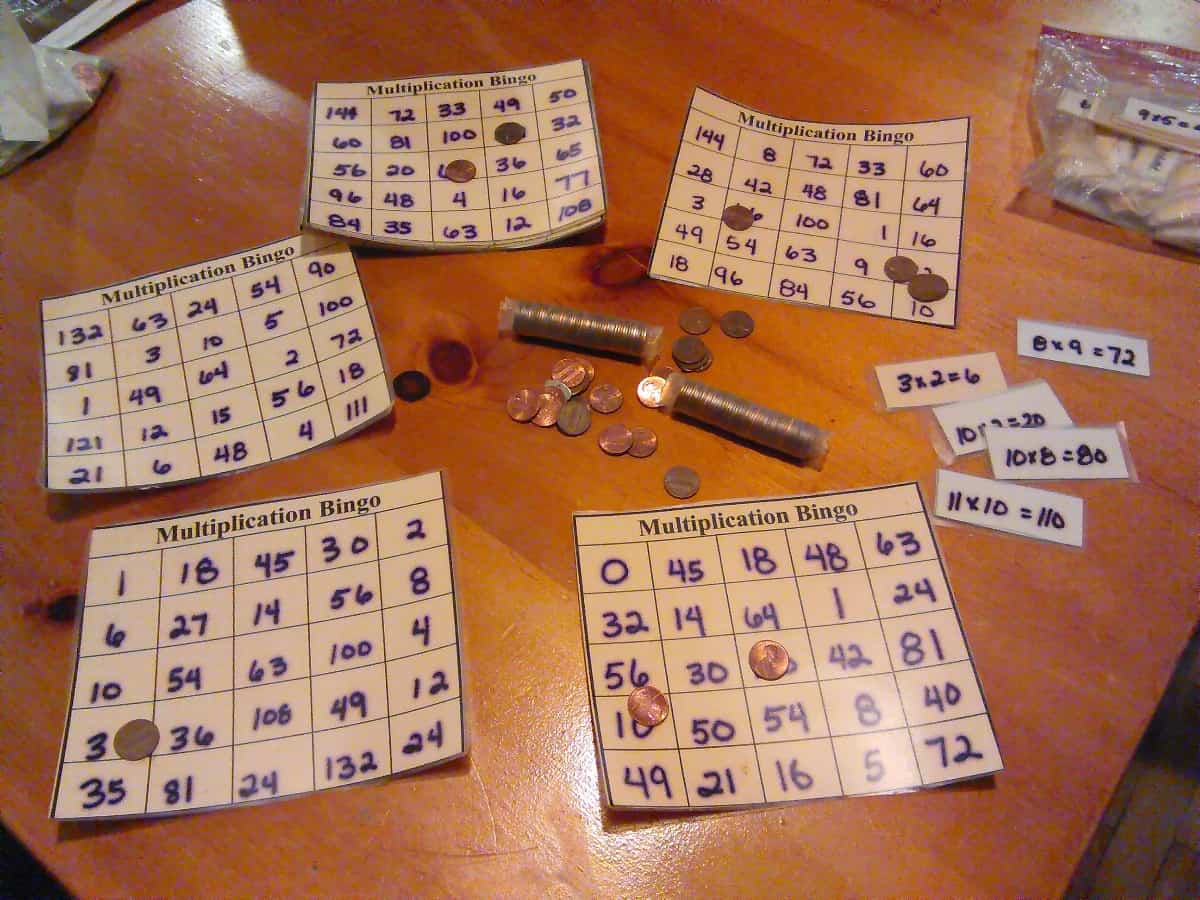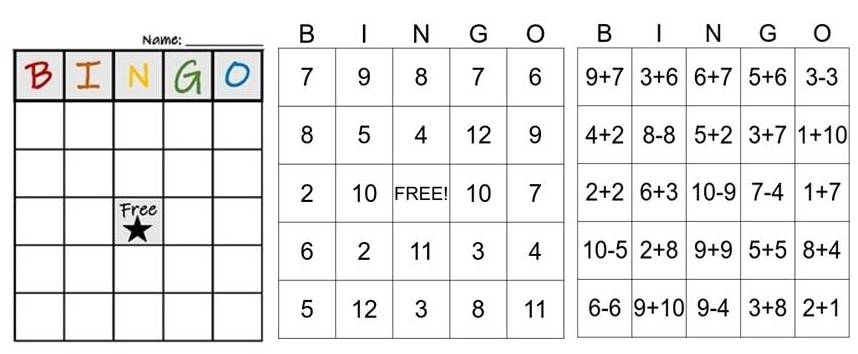
Amazing Math Game for Kids – Bingo – KS1 & KS2
Bingo Math Game
Is the game that this video is teaching the kids to get educated in math through, it is the game that serves all the different operations of math; addition, subtraction, multiplication and division, and it is also the one game that suits all the different age groups.
Teaching kids’ math through playing games has proved to be one of the successful methods that teachers use at school, especially when it comes to those games that are challenging to some extent, just like Bingo. Bingo is a mathematical game that needs a number of children to play it
– It could be done to one kid but would not be as challenging – and that is why we consider it best to either be followed at school or else at home, but for more than one kid. The idea behind the game is to challenge the kids’ skills and knowledge of math by choosing six different numbers
– You could also let the kids be the ones to choose them – and then start asking them mathematical questions that will either have the answer on the board or else will not.
If the question you have asked is answered on the white board, the kids should shout “Bingo” and say what this answer is, and the first one to say “Bingo” would actually be the winner. It is sometimes good to ask questions about which their answers are not written to see whether the kids are giving their minds the chance to think first or are just shouting “Bingo” to be the winners.

Bingo Math Game
Got Bingo Math Game?
If not, you’re missing out on a fun way to get your students engaged in math. Works great for small groups of kids or the math classroom.
It is a fun and engaging way to learn any math topic!
The idea behind the game is to challenge the kids and their knowledge of math by choosing six different numbers – you could also let the kids be the ones to start.
Yes, math can and should be enjoyable…lots of fun at times. A math game turns learning math into an exciting experience a kid will love. And they’ll keep coming back for more!
Just Added Subtraction Cards.
Bingo math motivates students to learn addition and subtraction. Or multiplication and division. Why stop there – Fractions, algebra, geometry, etc. The game will put a fun twist on just about any math topic.
Materials:
About 20 markers for each player (can use coins or bingo chips etc.)
Bingo cards for each player (for up to 20 students).
Choose addition or subtraction equation cards.
Print the cards and equation cards. Cut out the equation cards as well as each of the cards. If possible, it’s a good idea to laminate the cards and equation cards, so you use them over and over again.
How to Play?
Each player gets a card.
Decide who the caller will be. The caller is responsible for calling the game questions and is not a player in the game. So, the most likely person to be the caller is either the teacher or parent.
The caller should remind each player to cover their Free Space with one of their markers.
The caller will have a pre-made list of math questions related to whatever math topic the game is covering. The caller reads off one question at a time and allows the players to put their markers on one of the squares on their card if the answer matches.
If a player does not have a number on their card that is the answer to the question, they do not put a marker down for that question.
Play continues until someone has placed 5 markers across a row of their card, down a column of their card, or across a diagonal. The first player to mark off one of these patterns is the winner of the game.
After a player has declared to be the winner, the caller should check the winner’s card to make sure the player actually puts markers down on the answers that match the questions that were called out. If all their answers check, congratulations are in order.
As soon as they have put their last marker down, they should stand up and say “BINGO!”
Continue playing if you desire to have more than one winner. This is a way to have multiple winners. Just continue the game as above while the first winner waits for the next game.
I’m sure you realize the value of bringing fun into math, when possible, with games like this one and others. Some schools have already started math clubs that compete against other schools.
How do you play the question in the game?
The first student to ask a suitable question to the student holding the card wins. The student holding the card then answers the question, and the other student crosses off the question word from their bingo card. The next student then picks up a topic card and the process is repeated.

How do you play the Bingo game?
How do you play 5×5 bingo?
Shout (Bingo)if you get 5 squares in a row.
When someone shouts “Bingo,” the caller will stop choosing new letter-number combinations. If more than 1 player shouts “Bingo” after the same letter-number combination is called out, all of those players win.
Setting up Bingo
- Get at least 1 score card for each player. Bingo scorecards have 25 randomly numbered squares on them, with the word “BINGO” written across the top. Your goal is to cover 5 of those squares in a vertical, horizontal, or diagonal row.
You can find Bingo scorecards online at your local hobby store.
If you’re playing Bingo with kids, you can print blank Bingo scorecards from off the internet and write in your own words, symbols, or pictures in the squares.
- Explain to everyone how the game’s letter-number combinations work. In standard Bingo, there are 75 different letter-number combinations. Each letter-number combination corresponds with a square on the scorecards.
For example, all the numbers in the “B” column on the scorecard correspond with “B” letter-number combinations. If the caller chooses “B-9,” you would look for the “9” square under the “B” column.
If you’re looking for a simpler version of Bingo to play with kids, you can use pictures or words instead of letter-number combinations.
I am always trying to find fun math games for the children that I teach and my own kids at home. The other day I brought out an old BINGO game, and my kids were excited to try it out.
However, it ended up being too challenging for the kids because the numbers go higher than the numbers, they are familiar with. It ended up being pretty frustrating for them. So, I created a really simple Junior Number BINGO intended for young kids.
The numbers on the cards are only 1-20 and there are only nine numbers on each card. The cards are also a very simple design.
I often use the colored backgrounds as a way to quickly get children into groups if needed. For example, you can have the red group work together or have the blue group work with an adult for extra support as needed. There are 26 number cards in the set that are each different and 20 calling cards with the numbers 1-20 on them to use to call the numbers
Number BINGO is a great way for children to have fun as they work on recognizing their numbers in preschool and kindergarten.
It also works well in primary classes as a fun number review.
Explore the previous examples and facts, and you will find yourself getting the necessary knowledge and information to fully grasp the concept of the Bingo game. So, keep on visiting our Learning Mole to get more knowledge and information about all different kinds of stuff.


Leave a Reply